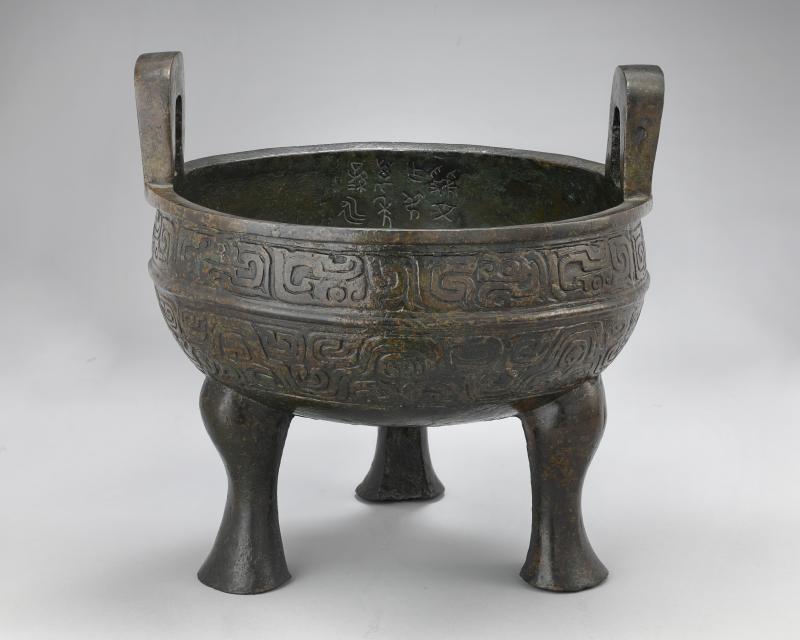China. Prints of the past
Discovery of antiquity and the revival of the arts 1786-1955
To discover soon !
7 十一月 2025 to 15 三月 2026
The Cernuschi museum presents: “China. Prints of the past”, an exhibition inviting you to walk in the footsteps of literati and monastic antiquarians who traversed mountains and sanctuaries in search of ancient inscriptions carved into stone or cast in bronze. These archaic signs and forms awakened an artistic movement, where the unprecedented combination of calligraphy, painting and rubbings gave rise to a striking modernity, reflecting the visual revolution unfolding in 19th-century China.
Tuesday to Sunday from 10 a.m. to 6 p.m., except certain public holidays
(the ticket office closes at 5:30 p.m.).
Full rate : €10
Concessions : €8
Free for Paris Musées card holders, under-18s, people with disabilities and the person accompanying them.
Admission to the permanent collections is free.

Edouard Chavannes (1865-1918). Longmen Buddhist Site, Henan Province. 1907. Facsimiles of digital prints from a gelatin silver bromide negative on glass plate © MNAAG, Paris, Dist. GrandPalaisRmn / image Guimet museum.
A long tradition of collecting
During the Qing dynasty, literati continued a long-standing tradition of connoisseurship, advancing the study of ritual vessels and steles into a rigorous scientific discipline. This field, known as jinshixue (the study of metal and stone), focuses on ancient inscriptions. Throughout the 18th and 19th century, this search for inscriptions led scholars to investigate more modest and less accessible remnants, such as calligraphies engraved into mountain sides.
The inked rubbing technique
The principal instrument of their collecting was the inked rubbing. This technique involved applying damp sheets of paper to steles, which would mold to their indentations and reliefs, before being covered with an ink layer that revealed the detail of their inscriptions. Initially used to preserve texts and inscriptions, this method over time would be increasingly used to transmit images of narrative bas-reliefs, sculptures and even three-dimensional ritual vases. In this pre-photographic era, rubbings were an essential means of reproduction and of historical study, with their dissemination ensured by illustrated books.
Inspiring unprecedented works
Embodying an aesthetic vision, these rubbings, which in turn became collector's items, went on to inspire unprecedented works. Their simple forms and primitive inscriptions would revolutionise the literati arts like calligraphy, painting and seal engravings. Painters, in particular, transformed rubbings into the supportive materials for their artistic creations.
Gradually, the decorative arts were also influenced by fragmented motifs, embracing the aesthetics of rubbings and collages: the world of antique collectors was thus transposed into the material culture of the great urban centers of the modern era.

Liuzhou 六舟 (1791-1858) and eight painters. Flower offerings and antique bricks (detail). Qing Dynasty (1644-1912), 1835. Ink and colors on paper. Zhejiang Provincial Museum.
Curators
Curator : Éric Lefebvre, director of the Cernuschi museum.
Co-curator : Wang Yifeng, curator of the provincial museum of Zhejiang.
Partners of the exhibition :
Zhejiang provincial museum

With the support of:
Société des Amis du musée Cernuschi


Ink rubbing and painting, 31 cm × 69.5 cm
Zhejiang Provincial Museum

Ink on paper
Zhejiang Provincial Museum

Ink and colors on paper
Zhejiang Provincial Museum

Bronze. Cernuschi Museum, M.C. 631, Henri Cernuschi leg, 1896
CCO Paris Musées/Musée Cernuschi

Ink on paper
Zhejiang Provincial Museum
----------------------------------------------------------------------------
In the extension of the exhibition
Inspired by the sign
Contemporary vision of epigraphy
October 14 – February 1st, 2026 (free entrance)
Echoing the exhibition China: Prints of the Past, this in-house exhibition explores how contemporary artists revisit the themes and draw inspiration from the characteristic techniques of the epigraphy movement (jinshi huapai), which will be featured in the Cernuschi Museum in autumn 2025. The primitive vitality of archaic scripts, the fragmentary aesthetic of archeological remains, the monumental nature of cliff faces adorned with inscriptions, and the creative potential of rubbing techniques inspire artists using wide means of expression, from painting and calligraphy to photography.
(in the Peinture room)
Wang Du
USA weather report
October 21 – December 14, 2025 (free entrance)
As it does every autumn, the Cernuschi Museum invites a contemporary artist to create an installation in the Buddha Hall. In 2025, the public will discover USA Weather Report an installation by Wang Du. Born in China in 1956, he has been active in France for 35 years. His work as a 3D artist questions the conditions under which representations of the contemporary world are produced, primarily through the media. As Wang Du’s work offers a unique testimony of our time, it also finds an echo in the past. USA Weather Report was therefore chosen to resonate with certain works in the China: Prints of the past exhibition.
(in the Buddha Hall)
----------------------------------------------------------------------------